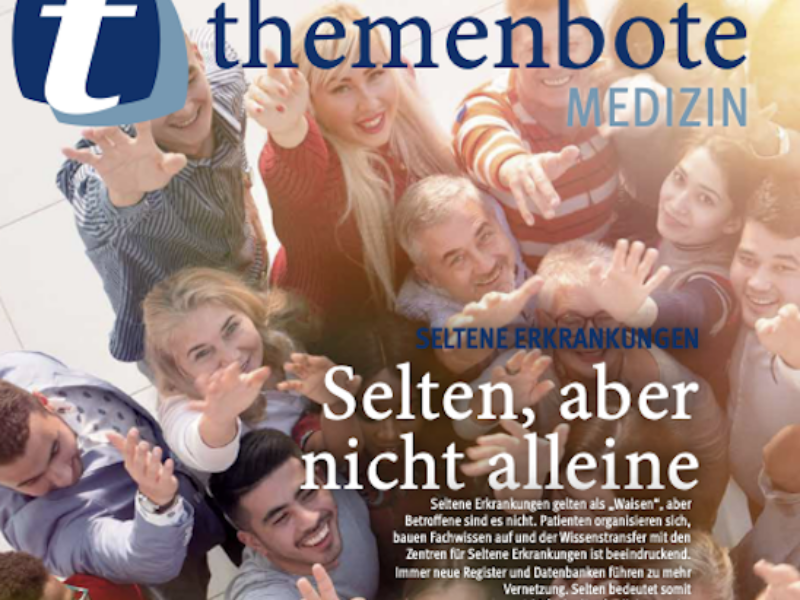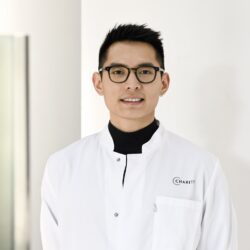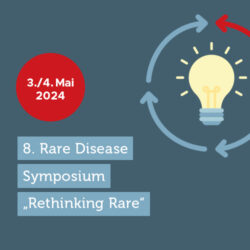
Im Interview mit ‚themenbote medizin‘ stellt Sanna Börgel, Geschäftsführerin der Alliance4Rare gGmbH, die Initiative der Eva Luise und Horst Köhler Stiftung vor und erläutert, wie das zivilgesellschaftliche Bündnis ein visionäres Versorgungs- und Forschungsnetzwerk für Seltene Erkrankungen auf den Weg bringen und so die Entwicklung moderner Therapieansätze vorantreiben will.
Frau Börgel, was genau ist die Alliance4Rare?
Die Alliance4Rare ist ein Bündnis gemeinnütziger Stiftungen, SpenderInnen und WissenschaftlerInnen. Es vernetzt forschungsstarke Einrichtungen der Kinder- und Jugendmedizin erstmals entlang einer standortübergreifend konsentierten Forschungsstrategie für Seltene Erkrankungen. Das ist hierzulande neu und soll die dringendsten medizinischen Bedarfe schnellstmöglich mit aussichtsreichen Therapieansätzen zusammenführen. Die Alliance4Rare versteht sich als Brückenbauerin zwischen den wachsenden Möglichkeiten moderner Medizin und dem immensen Forschungsbedarf zu Seltenen Erkrankungen.
Wie kam es zur Gründung der Alliance4Rare?
Die Initiative ging von der Eva Luise und Horst Köhler Stiftung aus. Frau Köhler engagiert sich seit bald zwanzig Jahren für die „Waisen der Medizin“. Sie kennt deren Notlage. Der große Forschungsbedarf liegt auf der Hand. Mittlerweile haben sich dank moderner Präzisionsmedizin völlig neue Behandlungsoptionen ergeben. Jetzt brauchen wir konsequente Investitionen in die pädiatrische Forschung.
Wer unterstützt die Initiative?
Die notwendigen Mittel wird die Alliance4Rare durch Spenden und Förderpartnerschaften einwerben. Wir sind sehr dankbar, dass die Friede Springer gGmbH den Start unseres Forschungsnetzwerks sehr großzügig fördert. Aber wir brauchen weitere Unterstützer:innen, damit das Forschungsnetzwerk aus aktuell drei Standorten bundesweit wachsen kann.
Welche Lücke schließt das Forschungsnetzwerk?
Das Bündnis fokussiert auf Seltene Erkrankungen, die sich sehr früh manifestieren und besonders schwerwiegend entwickeln. Durch gezielte Fördermaßnahmen wollen wir Kinderärzt:innen ermutigen, sich in Wissenschaft und Versorgung dauerhaft mit diesen Erkrankungen zu beschäftigen. Wir versuchen also, mehr als eine Lücke zu schließen. Letztlich geht es darum, schwerkranken Kindern Teilhabe am medizinischen Fortschritt zu sichern.
Wie wollen Sie dabei vorgehen?
Uns war klar: Wir müssen weg von der Gießkanne und hin zu Strukturen, die eine nachhaltige Vernetzung forschungsstarker Standorte in der Kinderheilkunde erlauben. Deshalb installieren wir „Clinician Scientist for Rare“-Programme. Diese bieten gezieltes Mentoring und geschützte Forschungszeiten, in denen sich die Teilnehmenden intensiv mit Seltenen Erkrankungen beschäftigen können.
Warum sind diese Maßnahmen erforderlich?
Um neue wissenschaftliche Erkenntnisse trotz geringer Fallzahlen schnell in die Anwendung zu bringen, müssen Forschung und Krankenversorgung eng zusammenrücken. Kinder mit Seltenen Erkrankungen brauchen Pädiater:innen, die den Spagat zwischen Labor und Krankenbett nicht scheuen. Nur sie sind für die Durchführung von Studien mit Kindern ausgebildet. Sie genießen das Vertrauen der betroffenen Familien und sind durch ihre klinische Erfahrung in der Lage, die relevanten Fragen zu formulieren und neue Zusammenhänge zu erkennen. Leider sinkt seit Jahren die Zahl der wissenschaftlichen Publikationen im Bereich der Kinderheilkunde.
Wie erklären Sie sich das?
Die pädiatrische Forschung hat ein Nachwuchsproblem, das mehrere Ursachen hat: fehlende Vorbilder, fehlende Rückendeckung und fehlende Forschungsgelder. Für den wissenschaftlichen Nachwuchs ist es zunehmend schwierig, Forschungsaktivitäten mit dem stark verdichteten klinischen Alltag in Einklang zu bringen. Viele geben irgendwann auf und entscheiden sich für die Niederlassung, die eine bessere Vereinbarkeit von Beruf und Familie verspricht. Und wer tatsächlich in der Forschung Karriere machen will, wendet sich häufig früher oder später einem anderen Fachbereich zu. Deutlich besser dotierte Forschungsbereiche sind beispielsweise Herz-Kreislauf-Erkrankungen, Demenz oder Krebs.
Was sind die Forschungsschwerpunkte der Alliance4Rare?
Die wissenschaftlichen Schwerpunkte liegen auf Projekten, die für das Überleben sowie die Lebensqualität der Betroffenen vordringlich sind und ein hohes Innovationspotenzial haben. Die Projekte lassen sich vier Programmlinien zuordnen: Prevent, Rare2Common, Innocure, Cope&Hope.
Prevent steht für Forschung zu Früherkennung und Sekundärprävention von Seltenen Erkrankungen. Rare2Common soll Seltene Erkrankungen hinsichtlich ihrer – oft unterschätzten – Bedeutung für häufige Krankheiten erforschen. Innocure kümmert sich um die gezielte Entwicklung innovativer Therapien für Seltene Erkrankungen im Rahmen von Proof-of-Concept-Studien mit kleinen Fallzahlen. Und Cope&Hope widmet sich der Versorgungsforschung zu unterstützenden Maßnahmen bei ungeklärten Erkrankungen ohne Therapieoptionen. Die erste Programmausschreibung läuft derzeit. Wir sind sehr gespannt, welche Anträge eingereicht werden.
Außerdem arbeiten Sie mit dem Berlin Institute of Health (BIH) zusammen. Worum geht es dabei?
Wir kooperieren mit dem BIH beim Ausschreibungsmanagement und der Durchführung der Summer Schools. Vor allem aber bei der Diagnostik von Patient:innen, bei denen bisher keine gesicherten Diagnosen gestellt werden konnten. Für diese besonders anspruchsvollen Fälle unserer Standortpartner bietet das BIH mit der Methodenplatt- form CADS einen neuen strukturierten Ansatz zur molekularen und klinischen Tiefenanalytik.
Welche Rolle kommt der ACHSE in der Alliance4Rare zu?
Die ACHSE e. V. war schon in der Konzeptionsphase eng mit eingebunden und bringt in allen Entscheidungsprozessen kontinuierlich die für uns immer wichtige Patientenperspektive mit ein.
Ist die Alliance4Rare auch international vernetzt?
Derzeit noch nicht, das wird kommen. Internationale Forschungspartner können ab sofort im Rahmen der Projektzusammenarbeit in das Forschungsnetz integriert werden. Wir planen ein organisches Wachstum.



